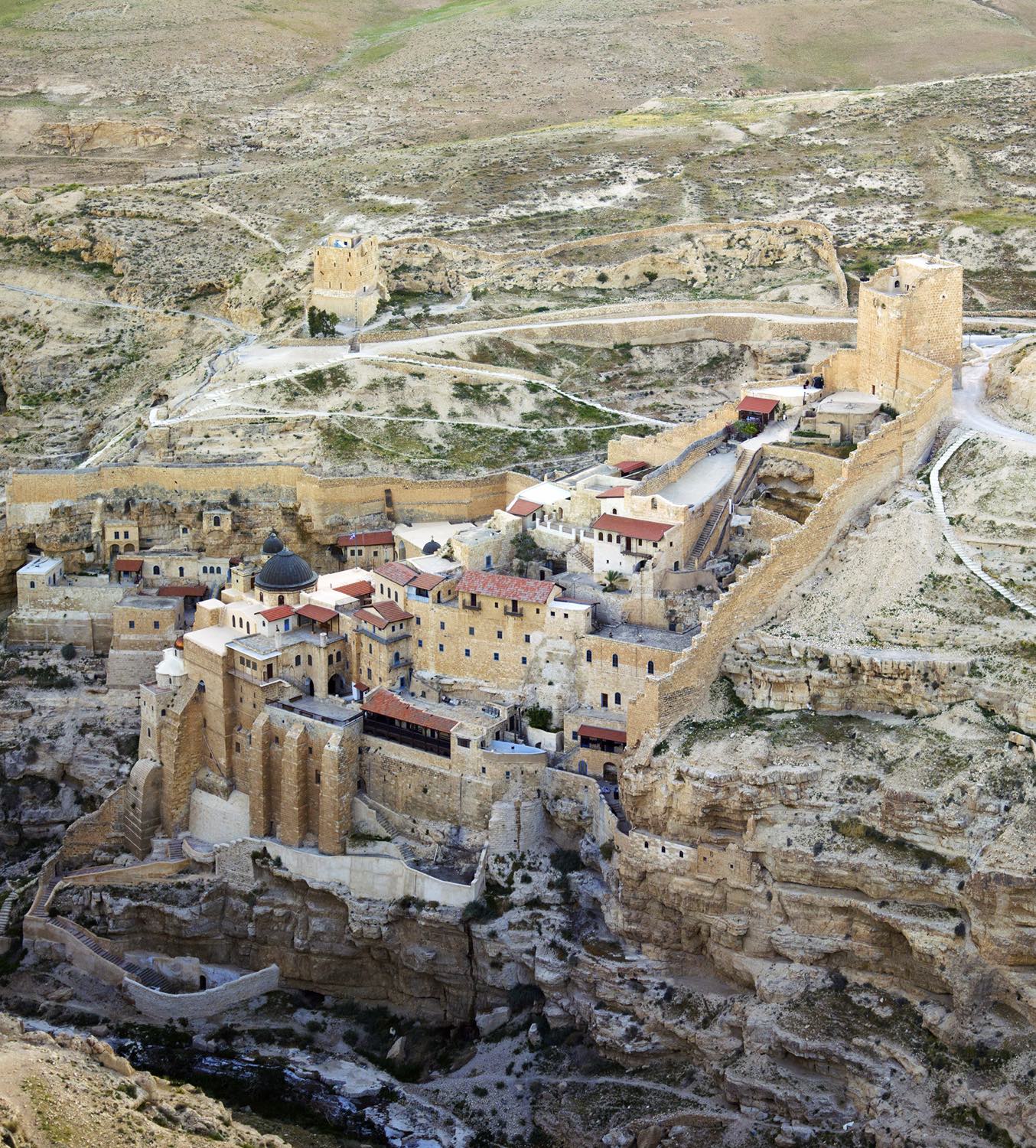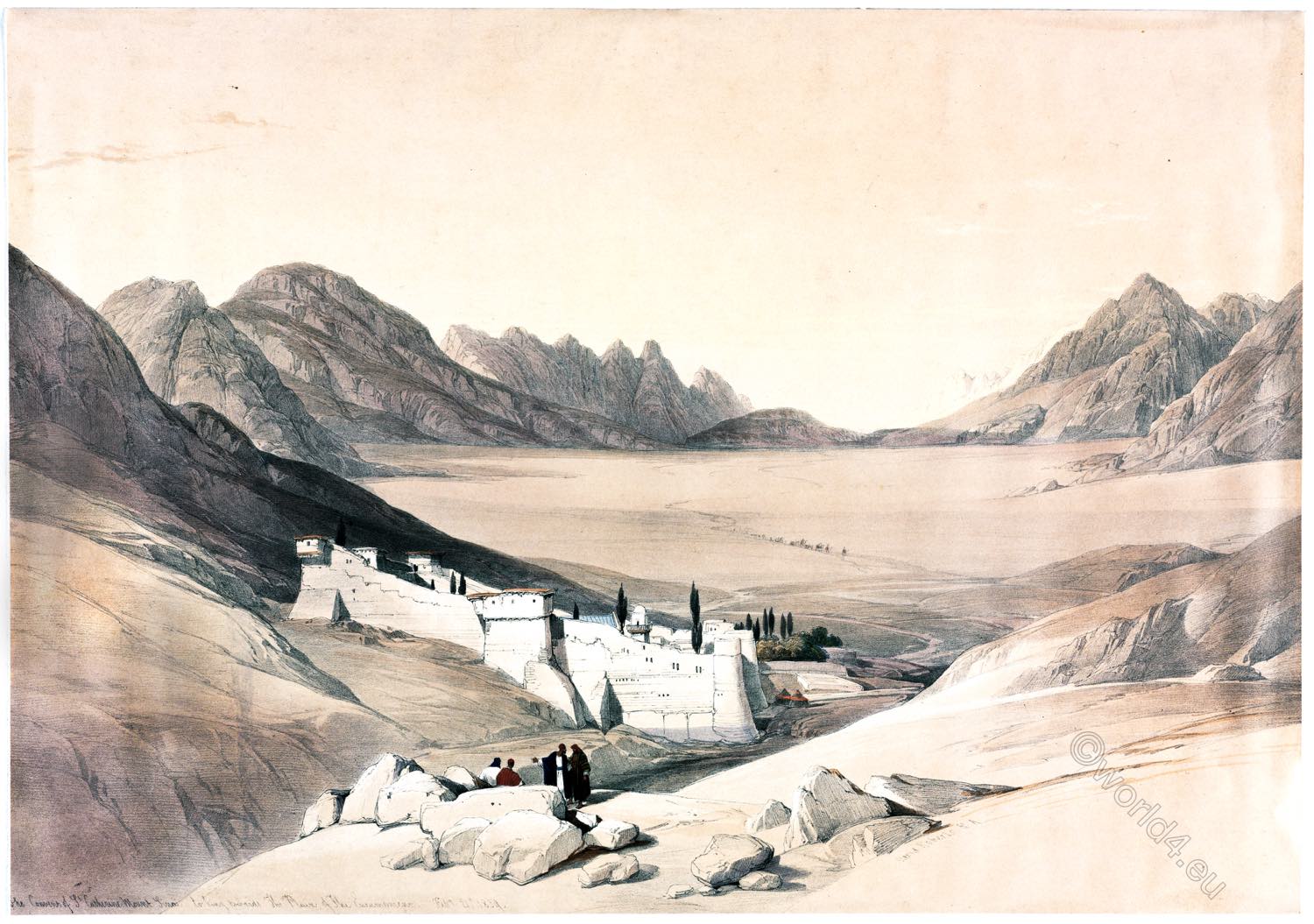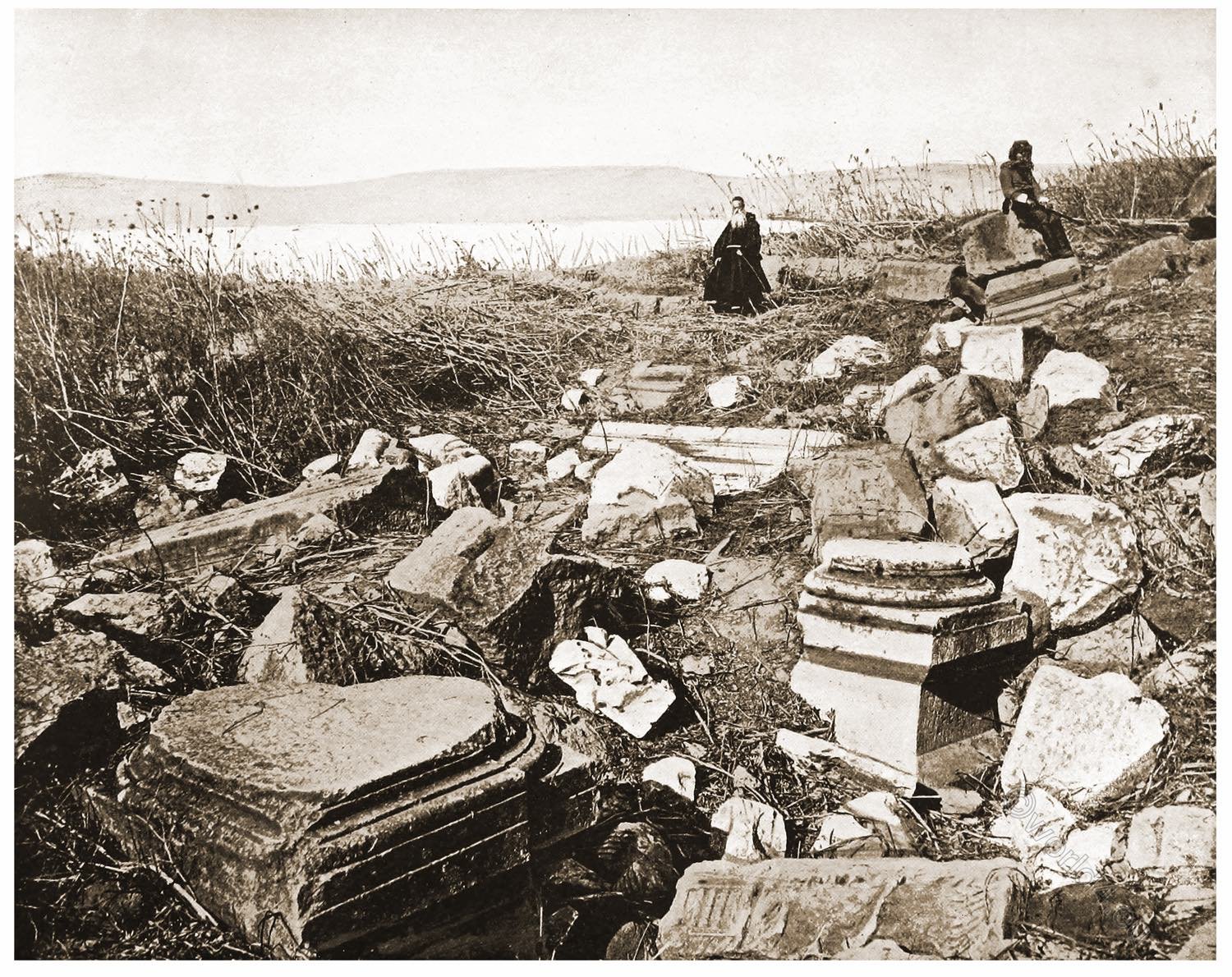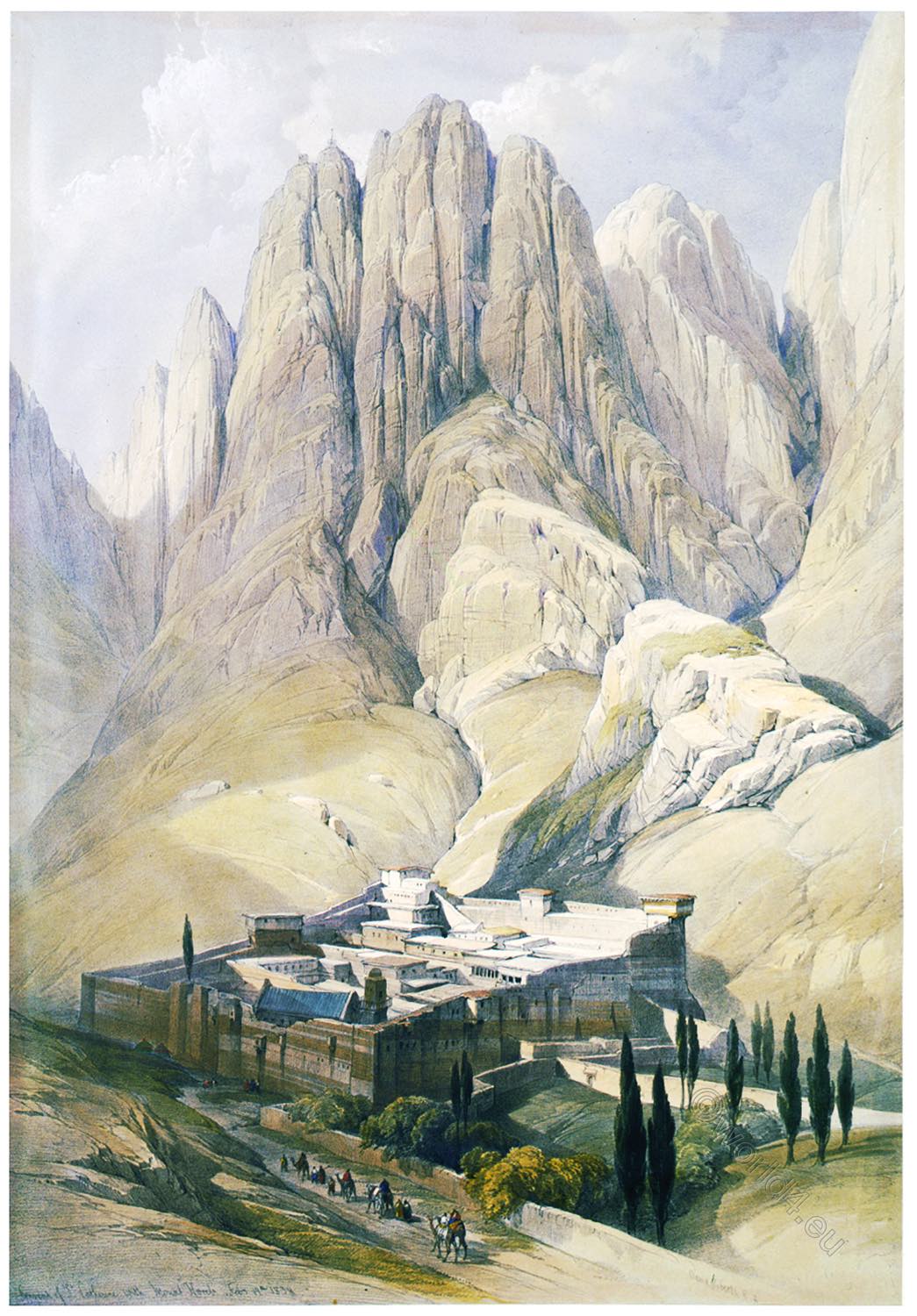Mar Saba, the Sabas Monastery, Saint Laura of Saint Sabbas (Greek Ἱερὰ Λαύρα τοῦ Ὁσίου Σάββα τοῦ Ἡγιασμένου) is a Greek Orthodox monastery in the Kidron Valley in the Judah Desert, 12 km east of Bethlehem. It is named after its founder, St. Sabas. It was founded in 439, became very flourishing in the 7th century; it reached about 4,000 monks, and then reduced to only 10 today. Mar Saba is one of the oldest inhabited monasteries in the world. After retiring from his high administrative post at the Umayyad court, John Damascene or John of Damascus (c. 676-749) lived in the monastery. His tomb is located in a cave below the monastery.

THE CONVENT OF MAR SABA, NEAR JERUSALEM
by Francis Frith.
WHEN the traveller has satisfied the first cravings of curiosity, or has somewhat appeased the fever of interest in which he entered the Holy City, he usually projects an excursion to Jericho and the Dead Sea, via the Convent of Santa Sarba (Lebanon): so, under the conduct of two or three of the Jericho Arabs, he ambles down the valley of the Kidron, past the well of En-Rogel (or Ein Rogel), and, after a ride of some four hours, encamps at the entrance of the rocky defile which the winter torrent has worn for itself in its course to the Dead Sea, and upon the southern slope of which, a mile or two further down, the convent is built; or he proceeds at once to the convent, and claims the hospitality of its inmates for the night.
The magnificently wild and deep ravine forms a sternly appropriate clinging-place for this old ascetic pile. We don’t pretend to have done anything like justice to the subject in our photograph. The view should be taken from the other side of the ravine, from which the whole of the building and the entire depth of the ravine could perhaps be rendered. So “impossible” are its sides, that to have reached this point would have involved another day’s labour. Amongst the rocks surrounding the convent we killed three or four brace of partridges.

The convent was founded in the year 512 by St. Sabas, a celebrated anchorite, who died about a.d. 532, “in the odor of sanctity,” at the age of ninety-four years. A violent and bitter controversy raged throughout Palestine during these centuries, consequent upon the declaration of the Council of Chalcedon (a.d. 451) in favor of the doctrine of the two distinct natures of Christ.
The opposers of the doctrine were called “Monophysites.” In this controversy the Convent of Mar Saba, whose inmates were in favor of the decree of the Council, suffered repeated violence. In the year a.d. 513, Severus, the Patriarch of Antioch, sent messages and troops to the patriarch of Jerusalem, requiring him to submit to him, as the head of the Monophysite faction.
This roused Sabas in his holy retreat: he “repaired with other abbots to Jerusalem, and expelled the messengers of Severus from the city.” Then, after the death of Sabas, new quarrels were fermented amongst the monks; and on the revival of the doctrines of Origen, forty of the monks of Santa Saba, embracing them, were expelled by their brethren.

These, being joined by others, made an attempt to possess themselves of the convent by violence. This was at first unsuccessful but they did at length; obtain possession, and for a short time the seat of the holy Sabas was filled by a follower of Origen. It was, however, shortly afterwards restored to the orthodox party by the military force of the Emperor Justinian.
About the close of the eighth century, a furious civil war raged in Palestine amongst the Saracens and Arabs, of which an account is given by Stephen, a contemporary monk of St. Saba. He relates that in the year 796 the convent was pillaged, and many of the monks slain. Early in the next century, a fierce persecution of the Christians was carried on by the Saracens: the churches were destroyed, and the convents pillaged; the monastery of St. Saba, which, says Dr. Robinson, “seems ever to have been a special object of vengeance,” being again plundered, and the monks massacred, in a.d. 812.
I am unable to continue the history of this place through the succeeding ages, but we may suppose that during the troublous times of the crusades, and through all the vicissitudes to which the Holy City was exposed, this prominent resort of the Christian monks, situated within a few hours’ journey of Jerusalem, must have been the scene of many a barbarous conflict, and perhaps of many an inhuman massacre.
On the precipitous sides of the ravine are observed many cell-like apertures, some of them partly built up with masonry: these were once the abodes of ascetics, who had devoted themselves for the remainder of life to this dismal entombment, depending even for their daily food upon the monks of the convent.
There are usually about thirty monks of the Greek Church resident at Santa Saba, who open their doors to wealthy European travelers, not, it is to be feared, without other motives than those of hospitality they; still pay the Bedouins to guard (i.e. not to rob) them, and keep a strict look-out from the high towers which overlook the ravine.
Source: Egypt and Palestine by Francis Frith, 1858. Publisher: London, James S. Virtue, City Road and Ivy Lane. New York: 26, John Street.
Image sources:
- Convent of Mar Saba. Bethlehem between 1860 and 1890. Retrieved from the Library of Congress.
- © Andrew Shiva, Mar Saba, Aerial view from SW./ Wikipedia / CC BY-SA 4.0
Continuing
Discover more from World4 Costume Culture History
Subscribe to get the latest posts sent to your email.






